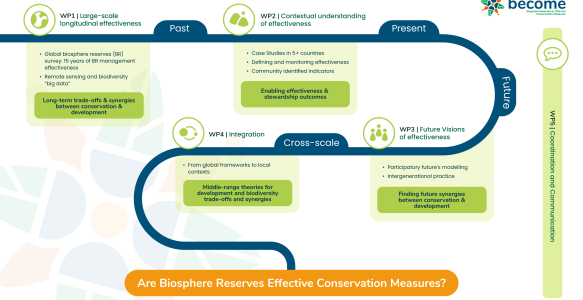BECOME is a Biodiversa+ project uniquely positioned to perform much-needed research across time and space on Biosphere Reserve effectiveness, integrating different dimensions and capturing what makes biosphere reserves unique. Past research on this topic has often relied on self-reported success as perceived by Biosphere Reserve managers and key stakeholders, or has focused on a single understanding of what is “effective”. BECOME will develop and apply a suite of evaluation metrics to facilitate and track both compliance monitoring and adaptive learning outcomes – because learning and testing responses to global challenges is a key pathway forward to bend the curve of biodiversity loss. We are a large international Consortia of complementary expertise and skills – you can read more about us here.

BECOME will take an interdisciplinary and transdisciplinary approach, combining diverse methodologies for evaluating effectiveness of BR management in supporting conservation and biocultural diversity across different dimensions (Figure 1). BECOME will harness existing data resources and infrastructure, including longitudinal governance and biodiversity data, to analyze BR effectiveness across temporal and spatial scales. By evaluating both processes and outcomes of Biosphere Reserve implementation, BECOME will help to capture the complexity of intertwined human and natural systems while encouraging learning through participatory transdisciplinary processes, informing both Biosphere reserve management and international policy.
|
BECOME Key Novel Aspects We address the pressing need to understand different effective conservation measures which support the protected area estate, such as OECMs. We will develop and apply a common suite of evaluation metrics to facilitate and track both compliance monitoring and collaborative adaptive management learning outcomes. Our research will enable evaluation of conservation effectiveness across different contexts and metrics to improve our knowledge on how a plurality of conservation approaches can be reconciled with the need for standardised international compliance monitoring. We will employ temporal and spatial multi-scale integration across various data types and methodological approaches. We will employ a rare legacy long-term dataset which has tracked management in almost 150 BRs for over 10 years. |

